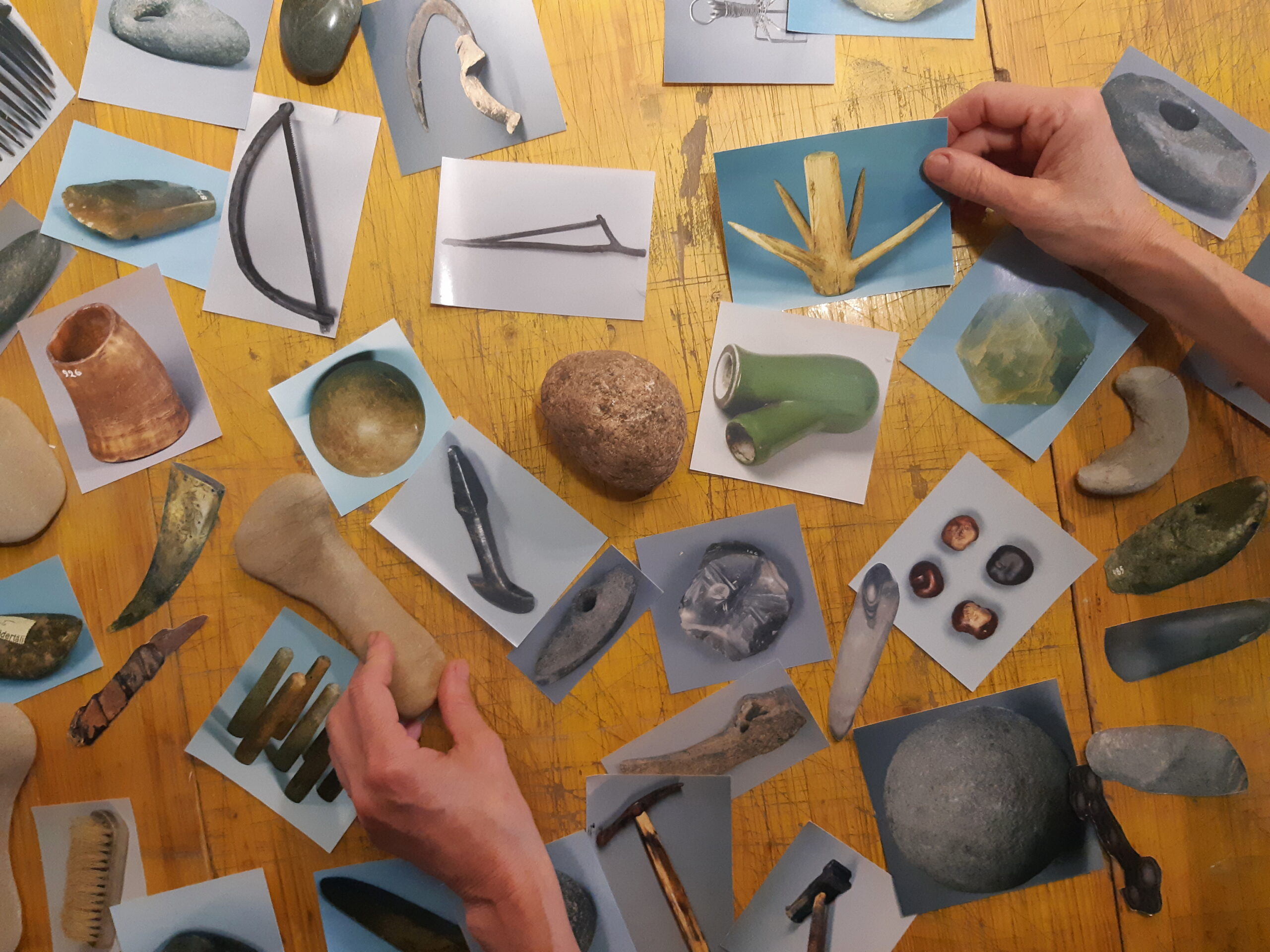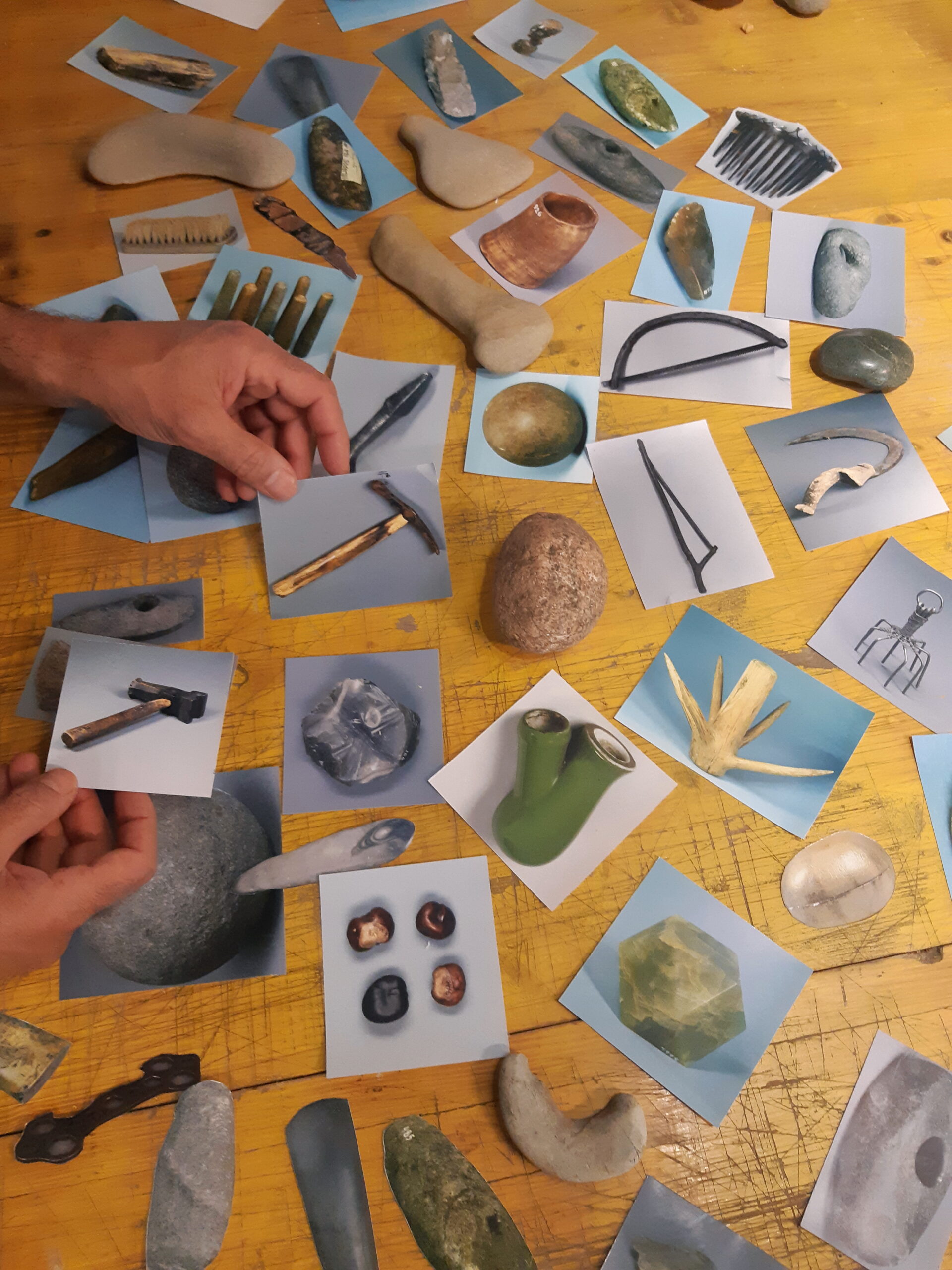
Södertälje konsthall
Texter
Geographical transmittals: Caretto/Spagna
Av Södertälje konsthall
Geographical transmittals: Caretto/Spagna
Av Södertälje konsthall
Geographical transmittals: Caretto/Spagna
Av Södertälje konsthall
Geographical transmittals: Caretto/Spagna
Av Södertälje konsthall
Geographical transmittals: Caretto/Spagna
Av Södertälje konsthall
Geographical transmittals: Caretto/Spagna
Av Södertälje konsthall
Geographical transmittals: Caretto/Spagna
Av Södertälje konsthall
Texter
Geographical transmittals: Caretto/Spagna
Av Södertälje konsthall

Relaterat
Everything in Everything, 2025
Objects from the Torekällberget museum collection, Södertälje and found objects
Why collect and preserve everyday objects from past generations in a public collection? What value can this “material memory” hold in the present — especially when embodied in objects trivialized by temporal distance, functional oblivion, or a gradual loss of symbolic reference? How can such objects — often reduced to a merely documentary role — be reactivated as “epistemological agents”? What kind of knowledge do they produce? And for whom?
Everything in Everything is an installation that takes shape from a selection of material culture objects held in the public collection of the Torekällberget museum in Södertälje. Everyday artifacts, silent remnants of past lives, yet rich in interpretative potential. Beginning with a selection process within the museum’s collection — which houses thousands of artifacts from different historical periods — Caretto/Spagna’s research expands into the urban and peri-urban territory of Södertälje through a practice of exploration and gathering of heterogeneous materials, which are then juxtaposed with the museum’s holdings. The selected objects — axes, hammers, containers, tools, etc.— are examined not only for their original function, but for the web of meanings in which they are embedded. Their forms speak of the human body and its evolution, the hands that held them, the gestures of those who used them, and the raw materials from which they were made. Rather than focusing on the notion of the “object,” the artists turn their attention to concept of Thing (from M. Heidegger and T. Ingold ), understood as a knot of relationships — an open, evolving entity that takes form within a complex relational field composed of forces, materials, uses, and stories. The work thus becomes an exercise in expanding the semantic field of the collection: every thing, even the most seemingly banal, originates from a dense network of relations that connects visible and invisible aspects. Among the selected artifacts, archetypal forms emerge — blades, combs, hammers, scrapers — that have remained virtually unchanged across millennia. Other objects reveal cultural attitudes, colonial logics, stereotypes, or the throwaway culture typical of modernity. In an age of planned obsolescence and accelerated consumption, these artifacts offer a tangible reflection on the meaning of duration, challenging the rigid distinction between resource and waste. How, then, can we “decolonize” things? Can we rethink them, reread them, reintegrate them into a new field of meaning? Caretto/Spagna propose a reflection on forms and the forces that generate them. The exhibited artifacts — whether tools, fragments, or discarded objects — are examined as emerging entities, shaped by the encounter between the human body and other bodies — vegetal, animal, and mineral.
Caretto/Spagna: Andrea Caretto (Torino, 1970, Degree in Natural Sciences) and Raffaella Spagna (Rivoli, 1967, Degree in Architecture) have been working together since 2002, collaborating with public and private institutions in Italy and abroad. They live and work in Cambiano (TO).
Caretto and Spagna explore the complex web of relationships from which things emerge: the fluxes and cycles of matter and morphogenesis, the perception of the environment, the transformations of the landscape, the wild/cultivated relationship and the processes of domestication, the relationships between living/inhabiting/building. Their approach is based on an aptitude for “presence” and experience in the world, in close contact with matter in all its transformations and individualisations. An exercise of attention and care for things, understood as nodes in an interweave, which trains the ability to perceive everything that exists as a system of elements in continuous correspondence. They are among the founding members of the artists’ association Diogene in Torino, and Pianpicollo Selvatico ETS Foundation – center for research in the arts and the sciences, Levice (TO), and artistic consultants for Munlab Ecomuseo dell’Argilla in Cambiano (TO). They collaborate with the Department of Philosophy and Educational Sciences at the University of Torino and with Unidee Academy of Cittadellarte-Fondazione Pistoletto, Biella (IT).
Institutions with which they have collaborated on exhibitions and projects include: Castello di Rivoli Museo d’Arte Contemporanea, Rivoli (2025, 2009, 2005), CRAC Alsace, France (2025); Le CRÉDAC, Ivry-sur- Seine, France (2024); PAV-Parco d’Arte Vivente, Torino (2022, 2021, 2018, 2016, 2014, 2013, 2009, 2008, 2007, 2006); CNR-Irea Institute for Electromagnetic Sensing of the Environment (2025, 2021- 2024); GAM-Galleria Civica d’Arte Moderna e Contemporanea di Torino (2017/2018, 2012); Fondazione Benetton, Treviso (2020, 2019); Fondazione Spinola Banna per l’Arte, Poirino (2017/2018); Bozar, Bruxelles, Belgium (2018); Fondazione Zegna, Trivero (2018, 2017); Cittadellarte-Fondazione Pistoletto, Biella (2018, 2017, 2015); Treignac Project, Dumergue Vieux Pont, France (2018); ArtOxygen, Mumbai, India (2016); ICIA-The Arts Trust, Mumbai, India (2016); MAGA, Gallarate (2015); AIR Krems, Krems, Austria (2015); Fondazione Merz, Torino (2014); Domaine de Chamarande, France (2014); Museo Riso, Palermo (2014); Khoj International Artists’ Association, New Delhi, India (2012); CAP-Centre d’Art Plastiques, Saint-Fons, France (2011); art3, Valence, France (2011); Mudam Luxembourg Musée d’Art Moderne Grand-Duc Jean (2010); Museo Marino Marini, Firenze (2006); Mart, museo di arte moderna e contemporanea di Trento e Rovereto, Rovereto (2008); Strozzina-Centro di Cultura Contemporanea Palazzo Strozzi, Firenze (2009); CAIRN-Centre d’Art Informel de Recherche sur la Nature, Digne-les-Bains, France (2008; 2011); Centre d’Art Le Parvis, Ibos, France (2007); Rurart-Centre d’Art, Rouillé, France (2008), Obra Social Caja Madrid, Spain (2007); CeSAC-Centro Sperimentale per le Arti Contemporanee, Caraglio (2012, 2005); Museo d’Arte Contemporanea Villa Croce, Genova (2004); Fondazione Sandretto Re Rebaudengo, Torino (2002, 2003).
Thanks to: Italian Culture Institute of Stockholm.

